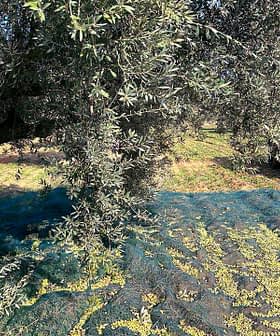
Global olive oil production is likely to total at least 3.2 million tons in 2013/14, according to a new, higher estimate from the International Olive Council.
And world consumption is likely to stay at about 3 million tons, the IOC says, despite its latest figures showing a fall in exports to the United States, Canada, China and Australia.
IOC tips production of 1.5 million tons in Spain, 500,000 in Italy, and 230,000 in Greece
The IOC last month made a provisional production forecast of 3 million tons but said in its October newsletter, just published, that in light of new data received, world production in 2013/14 “looks set to top 3.2 million tons.”
“Although we are still working with forecasts, this increase is becoming more tangible since the 2013/14 season, running from October 2013 to September 2014, is now in swing in most of the producing countries except those in the southern hemisphere,” it said.
The E.U. is expected to provide 2.3 million tons of global output, with Spain alone tipped to deliver 1.5 million, Italy 500,000, and Greece 230,000 tons.
Late last month the Andalusian government released its forecast that Andalusia would make more than 1.3 million tons of olive oil in 2013/14 and Spain about 1.6 million tons — figures some agricultural unions said were too optimistic.
Meanwhile, the GEA Westfalia Separator Group’s International Center for Olive Oil Excellence predicted Spain would make just 1.35 million tons and global output reach 2.76 million tons.
Global trade: up 21 percent in Japan but down in the U.S. Canada, Australia and China
With figures now in for 11 months of the last season — thus covering October 2012 to August 2013 — the IOC said imports of olive oil and olive pomace oil were up 21 percent in Japan, 8 percent in Russia and 2 percent in Brazil on the same period a season ago.
But they fell 15 percent in Australia, 4 percent in the United States and 5 percent each in Canada and China.
Figures for the first ten months of the crop year (those for August were not yet available) show olive oil imports into the E.U. rose 65 percent, “obviously linked to the low level of EU olive oil production in 2012/2013,” the IOC said.
Producer prices for extra virgin olive oil
- Spain: “Standing at around €2.36/kg, the prices paid to producers in Spain in late October were 5 percent lower than the same time a season earlier as markets reacted to the announcement of a good crop in the 2013/14 season, which opened on 1 October 2013, and the likelihood of olive oil storage being emptied as much as possible to make way for new season production.
“Even so, it should be remembered that prices had begun moving downwards already at the beginning of April 2013,” the IOC said.
- Italy: “After falling in the first weeks of October, prices in Italy switched direction and rose to €3.04/kg in the last week of the month, up by 7 percent on the same time the year before. Previously, they had risen from a low of €2.61/kg in the last week of November 2012 to €3.23/kg in the last week of April 2013, at which point they progressively dipped to €3.12/kg (-3 pc) where they held steady.”
- Greece: “Prices have dropped in recent weeks, reaching the same level as in Spain in the last week of
October (€2.36/kg). Despite this decline, prices are still 7pc higher than the same period a year earlier.
The difference between the price of refined olive oil and extra virgin olive oil currently lies at around €0.20/kg in Spain and €0.68/kg in Italy.








